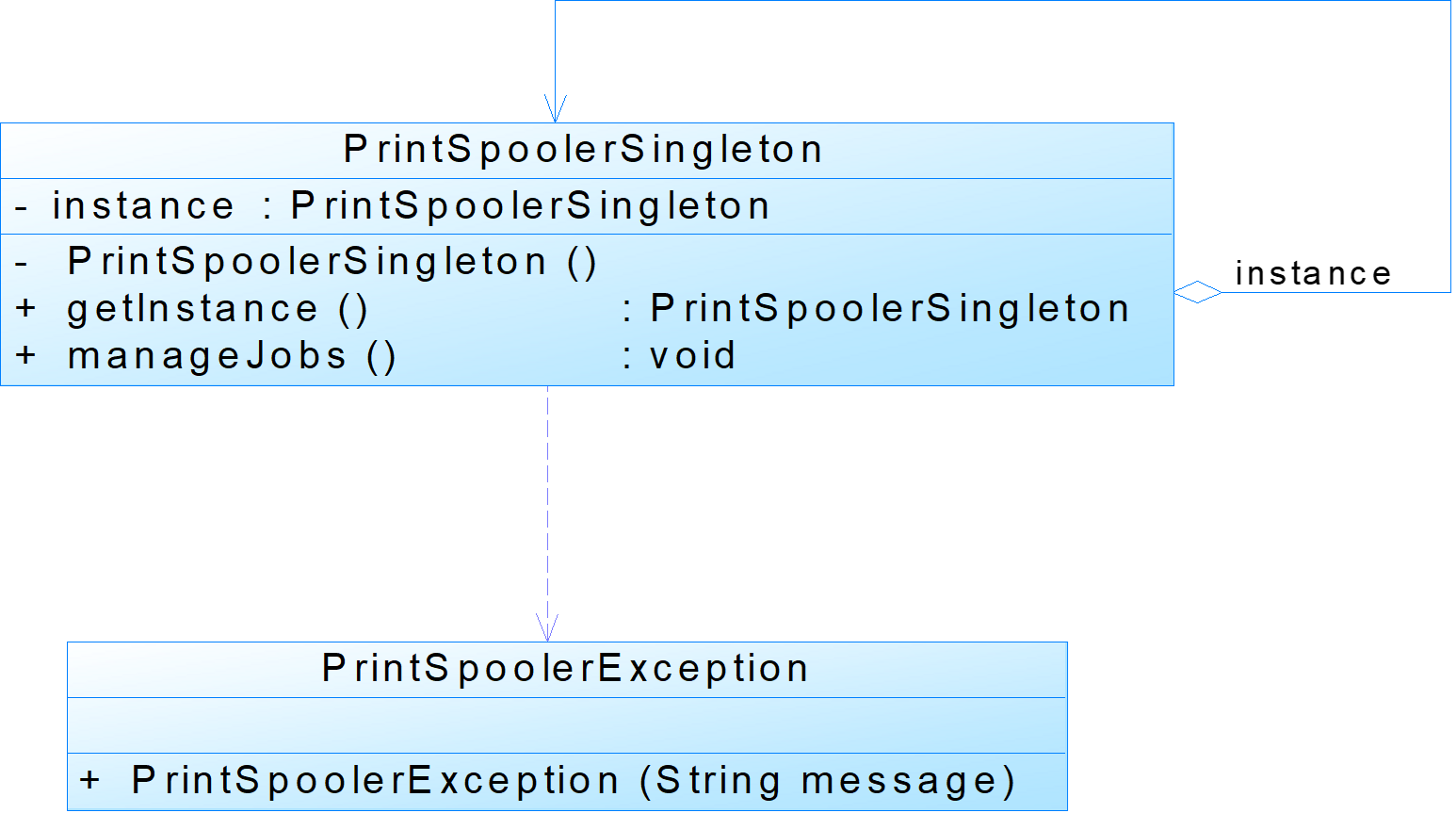1 Future接口理论知识复习
Future接口(FutureTask实现类)定义了操作异步任务执行一些方法,如获取异步任务的执行结果、取消异步任务的执行、判断任务是否被取消、判断任务执行是否完毕等
举例:比如主线程让一个子线程去执行任务,子线程可能比较耗时,启动子线程开始执行任务后,主线程就去做其他事情了,忙完其他事情或者先执行完,过了一会再才去获取子任务的执行结果或变更的任务状态(老师上课时间想喝水,他继续讲课不结束上课这个主线程,让学生去小卖部帮老师买水完成这个耗时和费力的任务)
一句话:Future接口可以为主线程开一个分支任务,专门为主线程处理耗时和费力的复杂任务

2 Future接口常用实现类FutureTask异步任务
2.1 Future接口能干什么
- Future是Java5新加的一个接口,它提供一种异步并行计算的功能,如果主线程需要执行一个很耗时的计算任务,我们会就可以通过Future把这个任务放进异步线程中执行,主线程继续处理其他任务或者先行结束,再通过Future获取计算结果
2.2 Future接口相关架构
- 目的:异步多线程任务执行且返回有结果,三个特点:多线程、有返回、异步任务(班长为老师去买水作为新启动的异步多线程任务且买到水有结果返回)
- 代码实现:Runnable接口+Callable接口+Future接口和FutureTask实现类。

/*** @package: com.yunyang.bilibili.juc.completablefeture* @description: FutureTask开启异步任务* @author: Yunyang* @date: 2024/10/12 23:15* @version:1.0**/
public class CompletableFutureDemo {public static void main(String[] args) throws ExecutionException, InterruptedException {FutureTask<String> futureTask = new FutureTask<>(new MyThread());Thread t1 = new Thread(futureTask,"t1");//开启一个异步线程t1.start();//有返回hello CallableSystem.out.println(futureTask.get());}
}class MyThread implements Callable<String>{@Overridepublic String call() throws Exception {System.out.println("----come in call() ");return "hello Callable";}
}
2.3 Future编码实战和优缺点分析
-
优点:Future+线程池异步多线程任务配合,能显著提高程序的运行效率
-
缺点
- get()阻塞:一旦调用get()方法求结果,一旦调用不见不散,非要等到结果才会离开,不管你是否计算完成,如果没有计算完成容易程序堵塞
- isDone()轮询:轮询的方式会耗费无谓的cpu资源,而且也不见得能及时得到计算结果,如果想要异步获取结果,通常会以轮询的方式去获取结果,尽量不要阻塞
-
结论
Future对于结果的获取不是很友好,只能通过阻塞或轮询的方式得到任务的结果
/*** @package: com.yunyang.bilibili.juc.completablefeture* @description:Future获取结果get和轮询* @author: Yunyang* @date: 2024/10/15 21:28* @version:1.0**/
public class FutureAPIDemo {public static void main(String[] args) throws ExecutionException, InterruptedException, TimeoutException {FutureTask<String> futureTask = new FutureTask<>(() -> {System.out.println(Thread.currentThread().getName() + "\t-----come in");try {TimeUnit.SECONDS.sleep(5);} catch (InterruptedException e) {throw new RuntimeException(e);}return "task over";});Thread t1 = new Thread(futureTask, "t1");t1.start();System.out.println(Thread.currentThread().getName() + "\t----忙其他任务了");//这样会有阻塞的可能,在程序没有计算完毕的情况下// System.out.println(futureTask.get());//只愿意等待三秒,计算未完成直接抛出异常// System.out.println(futureTask.get(3, TimeUnit.SECONDS));// 轮询while (true){if(futureTask.isDone()){System.out.println(futureTask.get());break;} else {TimeUnit.MICROSECONDS.sleep(500);System.out.println("正在处理中,不要催了,越催越慢");}}}
}
2.4 完成一些复杂的任务
-
对于简单的业务场景使用Future完全ok
-
回调通知
- 应对Future的完成时间,完成了可以告诉我,也就是我们的回调通知
- 通过轮询的方式去判断任务是否完成这样非常占cpu并且代码也不优雅
-
创建异步任务:Future+线程池组合
-
多个任务前后依赖可以组合处理(水煮鱼—>买鱼—>调料—>下锅):
- 想将多个异步任务的结果组合起来,后一个异步任务的计算结果需要钱一个异步任务的值
- 想将两个或多个异步计算font color=red>合并成为一个异步计算,这几个异步计算互相独立,同时后面这个又依赖前一个处理的结果
-
对计算速度选最快的:
- 当Future集合中某个任务最快结束时,返回结果,返回第一名处理结果
-
结论:
- 使用Future之前提供的那点API就囊中羞涩,处理起来不够优雅,这时候还是让CompletableFuture以声明式的方式优雅的处理这些需求
- 从i到i++
- Future能干的,CompletableFuture都能干
3 CompletableFuture对Future的改进
3.1 CompletableFuture为什么会出现
- get()方法在Future计算完成之前会一直处在阻塞状态下,阻塞的方式和异步编程的设计理念相违背。
- isDene()方法容易耗费cpu资源(cpu空转),
- 对于真正的异步处理我们希望是可以通过传入回调函数,在Future结束时自动调用该回调函数,这样,我们就不用等待结果
JDK8设计出CompletableFuture,CompletableFuture提供了一种观察者模式类似的机制,可以让任务执行完成后通知监听的一方。
3.2 CompletableFuture和CompletionStage介绍
3.2.1 类架构说明
public class CompletableFuture<T> implements Future<T>, CompletionStage<T> {

3.2.2 接口CompletionStage
- 代表异步计算过程中的某一个阶段,一个阶段完成以后可能会触发另外一个阶段
- 一个阶段的执行可能是被单个阶段的完成触发,也可能是由多个阶段一起触发
- 一个阶段的计算执行可以是一个Function, Consumer或者Runnable。比如:
stage.thenApply(x -> square(x).thenAccept(x -> System.out.print(x)).thenRun(()->system.out.println())
3.2.3 类CompletableFuture
- 提供了非常强大的Future的扩展功能,可以帮助我们简化异步编程的复杂性,并且提供了函数式编程的能力,可以通过回调的方式处理计算结果,也提供了转换和组合CompletableFuture的方法
- 它可能代表一个明确完成的Future,也可能代表一个完成阶段(CompletionStage),它支持在计算完成以后触发一些函数或执行某些动作
- 实现了Future和CompletionStage接口
3.3 核心的四个静态方法,来创建一个异步任务
CompletableFuture 是 Java 8 引入的一个强大的异步编程工具,提供了多种方法来创建和管理异步任务。以下是四个核心的静态方法,用于创建不同类型的异步任务:
3.3.1 runAsync - 无返回值
public static CompletableFuture<Void> runAsync(Runnable runnable)
public static CompletableFuture<Void> runAsync(Runnable runnable, Executor executor)
- 用途:执行一个没有返回值的异步任务。
- 参数:
runnable:要执行的任务。executor:可选的线程池,如果不指定,默认使用ForkJoinPool.commonPool()。
3.3.2 supplyAsync - 有返回值
public static <U> CompletableFuture<U> supplyAsync(Supplier<U> supplier)
public static <U> CompletableFuture<U> supplyAsync(Supplier<U> supplier, Executor executor)
- 用途:执行一个有返回值的异步任务。
- 参数:
supplier:提供返回值的任务。executor:可选的线程池,如果不指定,默认使用ForkJoinPool.commonPool()。
3.3.3 Executor 参数说明
- 默认线程池:如果没有指定
Executor,默认使用ForkJoinPool.commonPool()作为线程池执行异步代码。 - 自定义线程池:如果指定了线程池,则使用自定义的线程池执行异步代码。
3.3.4 CompletableFuture 减少阻塞和轮询
- 回调机制:
CompletableFuture支持传入回调对象,当异步任务完成或发生异常时,自动调用回调对象的方法,减少阻塞和轮询。
3.3.5 CompletableFuture 的优点
- 自动回调:异步任务结束时,自动回调某个对象的方法。
- 顺序执行:主线程设置好回调后,不再关心异步任务的执行,异步任务之间可以顺序执行。
- 异常处理:异步任务出错时,自动回调某个对象的方法。
3.3.6 示例代码
- 四个静态方法的演示
/*** @package: com.yunyang.bilibili.juc.completablefeture* @description: 四个静态方法的演示* @author: Yunyang* @date: 2024/10/16 21:41* @version:1.0**/
public class CompletableFutureBuildDemo {public static void main(String[] args) throws ExecutionException, InterruptedException {ExecutorService threadPool = Executors.newFixedThreadPool(3);CompletableFuture<Void> completableFuture = CompletableFuture.runAsync(() -> {System.out.println(Thread.currentThread().getName());try {TimeUnit.SECONDS.sleep(1);} catch (InterruptedException e) {throw new RuntimeException(e);}},threadPool);System.out.println(completableFuture.get()); // 输出:nullCompletableFuture<String> supplyAsyncCompletableFuture = CompletableFuture.supplyAsync(() -> {System.out.println(Thread.currentThread().getName());try {TimeUnit.SECONDS.sleep(1);} catch (InterruptedException e) {throw new RuntimeException(e);}return "hello supplyAsync";},threadPool);System.out.println(supplyAsyncCompletableFuture.get()); // 输出:hello supplyAsyncthreadPool.shutdown();}
}
分析:
- 创建线程池:使用
Executors.newFixedThreadPool(3)创建一个固定大小的线程池。 - 无返回值的异步任务:使用
runAsync方法执行一个无返回值的异步任务。 - 有返回值的异步任务:使用
supplyAsync方法执行一个有返回值的异步任务。 - 处理异步任务的结果:使用
get()方法处理异步任务的返回值。 - 关闭线程池:在任务完成后关闭线程池。
- CompletableFuture减少阻塞和轮询
/*** @package: com.yunyang.bilibili.juc.completablefeture* @description: CompletableFuture减少阻塞和轮询* @author: Yunyang* @date: 2024/10/16 21:53* @version:1.0**/
public class CompletableFutureUserDemo {public static void main(String[] args) throws ExecutionException, InterruptedException {ExecutorService threadPool = Executors.newFixedThreadPool(3);try {CompletableFuture.supplyAsync(()->{System.out.println(Thread.currentThread().getName() + "----come in");final int result =ThreadLocalRandom.current().nextInt(10);try {TimeUnit.SECONDS.sleep(1);} catch (InterruptedException e) {throw new RuntimeException(e);}System.out.println("-----1秒钟后出结果:" + result);if(result > 5){int i = 1/0; //模拟产生异常情况}return result;},threadPool).whenComplete((v,e)->{if(e == null){System.out.println("-------计算完成,更新系统UpdateValue:" + v);}}).exceptionally(e->{e.printStackTrace();System.out.println("异常情况:" + e.getCause() + "\t" + e.getMessage());return null;});System.out.println(Thread.currentThread().getName() + "线程先去忙其他任务");} catch (Exception e) {throw new RuntimeException(e);} finally {threadPool.shutdown();}// 主线程不要立刻结束,否则completableFuture默认使用的线程池会立刻关闭:暂停3秒钟线程
/* try {TimeUnit.SECONDS.sleep(3);} catch (InterruptedException e) {throw new RuntimeException(e);}*/}private static void future1() throws InterruptedException, ExecutionException {CompletableFuture<Integer> completableFuture = CompletableFuture.supplyAsync(() -> {System.out.println(Thread.currentThread().getName() + "----come in");int result = ThreadLocalRandom.current().nextInt(10);try {TimeUnit.SECONDS.sleep(1);} catch (InterruptedException e) {throw new RuntimeException(e);}System.out.println("----1秒钟后出结果: " + result);return result;});System.out.println(Thread.currentThread().getName() + "线程先去忙其他任务");System.out.println(completableFuture.get());}
}/*** 有异常情况:* pool-1-thread-1----come in* main线程先去忙其他任务* -----1秒钟后出结果:7* java.util.concurrent.CompletionException: java.lang.ArithmeticException: / by zero* 异常情况:java.lang.ArithmeticException: / by zero java.lang.ArithmeticException: / by zero*//*** 无异常情况:* pool-1-thread-1----come in* main线程先去忙其他任务* -----1秒钟后出结果:0* -------计算完成,更新系统UpdateValue:0** */
3.4 案例精讲-从电商网站的比价需求展开
3.4.1 函数式编程已成为主流
-
Lambda表达式+Stream流式调用+Chain链式调用+Java8函数式编程
-
函数式接口
- Runnable:无参数、无返回值
- Function:接受一个参数,并且有返回值
- Consumer:接受一个参数,没有返回值
- BiConsumer:接受两个参数,没有返回值
- Supplier:没有参数,有返回值
-
小结

-
chain链式调用
/*** @package: com.yunyang.bilibili.juc.completablefeture* @description: Chain链式调用演示* @author: Yunyang* @date: 2024/10/17 22:06* @version:1.0**/
public class CompletableFutureMallDemo {public static void main(String[] args) throws ExecutionException, InterruptedException {final Student student = new Student();student.setId(1).setStudentName("zhangsan").setMajor("english"); //链式调用}
}@AllArgsConstructor
@NoArgsConstructor
@Data
@Accessors(chain = true) //开启链式调用
class Student{private Integer id;private String studentName;private String major;
}
3.4.2 join和get对比
- join和get对比
/*** @package: com.yunyang.bilibili.juc.completablefeture* @description:join和get对比* @author: Yunyang* @date: 2024/10/17 22:06* @version:1.0**/
public class CompletableFutureMallDemo {public static void main(String[] args) throws ExecutionException, InterruptedException {final CompletableFuture<String> completableFuture = CompletableFuture.supplyAsync(() -> {return "hello 1234";});System.out.println(completableFuture.get());System.out.println(completableFuture.join());// join和get的作用大致相同,其区别是在编译时是否报出检查时异常}
}
- join和get的作用大致相同,其区别是在编译时是否报出检查时异常:
- get在编译时会报出异常;
- join则不会报出异常。
3.4.3 大厂业务需求说明
切记:功能—>性能(完成—>完美)
电商网站比价需求分析:
- 需求说明:
a. 同一款产品,同时搜索出同款产品在各大电商平台的售价
b. 同一款产品,同时搜索出本产品在同一个电商平台下,各个入驻卖家售价是多少 - 输出返回:
a. 出来结果希望是同款产品的在不同地方的价格清单列表,返回一个List
例如:《Mysql》 in jd price is 88.05 《Mysql》 in taobao price is 90.43 - 解决方案,对比同一个产品在各个平台上的价格,要求获得一个清单列表
a. step by step,按部就班,查完淘宝查京东,查完京东查天猫…
b. all in,万箭齐发,一口气多线程异步任务同时查询
3.4.4 一波流Java8函数式编程带走-比价案例实战Case
/*** 这里面需要注意一下Stream流方法的使用* 这种异步查询的方法大大节省了时间消耗,可以融入简历项目中,和面试官有所探讨*/
public class CompletableFutureMallDemo2 {static List<NetMall> list = Arrays.asList(new NetMall("jd"),new NetMall("dangdang"),new NetMall("taobao"));/*** step by step* @param list* @param produceName* @return*/public static List<String> getPrice(List<NetMall> list, String produceName){//《Mysql》 in jd price is 88.05return list.stream().map(netMall ->String.format("《" +produceName + "》 in %s price is %.2f",netMall.getNewMallName(),netMall.calcPrice(produceName))).collect(Collectors.toList());}/***all in* 把list里面的内容映射给CompletableFuture()* @param list* @param productName* @return*/public static List<String> getPriceByCompletableFuture(List<NetMall> list,String productName){return list.stream().map(netMall -> CompletableFuture.supplyAsync(()->String.format("《" + productName + "》 in %s price is %.2f",netMall.getNewMallName(),netMall.calcPrice(productName)))) //Stream<CompletableFuture<String>>.collect(Collectors.toList()) //List<CompletableFuture<String>>.stream() //Stream<String>.map(stringCompletableFuture -> stringCompletableFuture.join()) //List<String>.collect(Collectors.toList());}public static void main(String[] args) {/*** 采用step by setp方式查询* 《mysql》 in jd price is 110.72* 《mysql》 in dangdang price is 109.34* 《mysql》 in taobao price is 109.66* ---costTime: 3079毫秒*/long startTime = System.currentTimeMillis();final List<String> list1 = getPrice(list, "mysql");for (String element : list1) {System.out.println(element);}long endTime = System.currentTimeMillis();System.out.println("---costTime: " + (endTime - startTime) + "毫秒");System.out.println("**************************************");/*** 采用 all in 三个异步线程方式查询* 《mysql》 in jd price is 110.79* 《mysql》 in dangdang price is 110.61* 《mysql》 in taobao price is 110.30* ---costTime: 1029毫秒*/long startTime2 = System.currentTimeMillis();final List<String> list2 = getPriceByCompletableFuture(list, "mysql");for (String element : list2) {System.out.println(element);}long endTime2 = System.currentTimeMillis();System.out.println("---costTime: " + (endTime2 - startTime2) + "毫秒");}
}class NetMall{@Getterprivate String newMallName;public NetMall(String newMallName) {this.newMallName = newMallName;}public double calcPrice(String productName){try {TimeUnit.SECONDS.sleep(1);} catch (InterruptedException e) {throw new RuntimeException(e);}return ThreadLocalRandom.current().nextDouble() * 2 + productName.charAt(0);}
}
4 CompletableFuture常用方法
4.1 获得结果和触发计算
4.1.1 获取结果
-
public T get()- 描述: 这是一个阻塞方法,它会一直等待直到计算完成并返回结果。如果计算过程中抛出异常,
get()方法会将异常重新抛出。 - 特点: 不见不散,即必须等到计算完成才能获取结果。
- 描述: 这是一个阻塞方法,它会一直等待直到计算完成并返回结果。如果计算过程中抛出异常,
-
public T get(long timeout, TimeUnit unit)- 描述: 这也是一个阻塞方法,但它会在指定的时间内等待计算完成。如果在指定时间内计算未完成,它会抛出
TimeoutException。 - 特点: 过时不候,即如果在指定时间内未完成,则抛出异常。
- 描述: 这也是一个阻塞方法,但它会在指定的时间内等待计算完成。如果在指定时间内计算未完成,它会抛出
-
public T join()- 描述: 类似于
get()方法,但它不会抛出检查型异常(如InterruptedException和ExecutionException),而是直接抛出非检查型异常(如RuntimeException)。 - 特点: 不抛出异常,适合在不需要处理检查型异常的场景中使用。
- 描述: 类似于
-
public T getNow(T valueIfAbsent)- 描述: 这是一个非阻塞方法,它会立即返回结果。如果计算已经完成,则返回计算结果;如果计算尚未完成,则返回传入的
valueIfAbsent值。 - 特点: 立即获取结果,不阻塞。如果计算未完成,返回设定的默认值。
- 描述: 这是一个非阻塞方法,它会立即返回结果。如果计算已经完成,则返回计算结果;如果计算尚未完成,则返回传入的
4.1.2 主动触发计算
public boolean complete(T value)- 描述: 这个方法用于主动完成计算,并设置计算结果为传入的
value。如果计算尚未完成,调用此方法后,所有等待结果的线程将立即获得这个value。如果计算已经完成,则此方法不会产生任何影响,并返回false。 - 特点: 是否打断
get()方法立即返回括号值。如果计算未完成,调用complete(value)后,所有get()方法调用将立即返回value。
- 描述: 这个方法用于主动完成计算,并设置计算结果为传入的
4.1.3 示例代码
/*** @package: yunyang.bilibili.juc.completablefeture* @description: 获得结果和触发计算* @author: Yunyang* @date: 2024/10/18 20:59* @version:1.0**/
public class CompletableFutureAPIDemo {public static void main(String[] args) //throws ExecutionException, InterruptedException, TimeoutException{final CompletableFuture<String> completableFuture = CompletableFuture.supplyAsync(() -> {try {TimeUnit.SECONDS.sleep(1);} catch (InterruptedException e) {throw new RuntimeException(e);}return "abc";});// System.out.println(completableFuture.get()); // 不见不散// System.out.println(completableFuture.get(2L, TimeUnit.SECONDS)); // 过时不候// System.out.println(completableFuture.join()); // 不抛出异常try {TimeUnit.SECONDS.sleep(2);} catch (InterruptedException e) {throw new RuntimeException(e);}// System.out.println(completableFuture.getNow("xxxx")); // 立即获取结果System.out.println(completableFuture.complete("completeValue") + "\t" + completableFuture.join()); // 主动触发计算}
}
4.1.4 小结
-
获取结果: 你可以使用
get(),get(timeout),join(), 和getNow()方法来获取异步计算的结果。 -
主动触发计算: 使用
complete(value)方法可以主动完成计算并设置结果,打断所有等待结果的线程。
4.2 对计算结果进行处理
4.2.1 thenApply
- 描述:
thenApply方法用于在CompletableFuture完成后对结果进行转换或处理。它接收一个Function作为参数,该函数将前一个CompletableFuture的结果作为输入,并返回一个新的结果。 - 特点:
- 串行化:
thenApply方法会等待前一个CompletableFuture完成后再执行。 - 异常处理: 如果前一个
CompletableFuture抛出异常,thenApply不会执行,整个链路会被中断。
- 串行化:
4.2.2 handle
- 描述:
handle方法也用于在CompletableFuture完成后对结果进行处理,但它可以处理异常。它接收一个BiFunction作为参数,该函数接收两个参数:前一个CompletableFuture的结果(或异常)和可能的异常。 - 特点:
- 串行化:
handle方法会等待前一个CompletableFuture完成后再执行。 - 异常处理: 即使前一个
CompletableFuture抛出异常,handle方法仍然会执行,并且可以对异常进行处理。
- 串行化:
4.2.3 示例代码
/*** @package: yunyang.bilibili.juc.completablefeture* @description:对计算结果进行处理* @author: Yunyang* @date: 2024/10/18 21:16* @version:1.0**/
public class CompletableFutureAPI2Demo {public static void main(String[] args) {// testThenApply();testHandle();}/*** 使用 handle*/private static void testHandle() {final ExecutorService threadPool = Executors.newFixedThreadPool(3);CompletableFuture.supplyAsync(()->{try {TimeUnit.SECONDS.sleep(1);} catch (InterruptedException e) {throw new RuntimeException(e);}System.out.println("1111");return 1;},threadPool).handle((f,e)->{int i = 1/0;System.out.println("2222"); // 有异常也可以往下一步走,根据带的异常参数可以进一步处理return f + 2;}).handle((f,e)->{System.out.println("3333");return f + 3;}).whenComplete((v,e)->{if(e==null){System.out.println("----计算结果:"+v);}}).exceptionally(e->{e.printStackTrace();System.out.println(e.getMessage());return null;});System.out.println(Thread.currentThread().getName() + "----主线程去忙其他任务了");threadPool.shutdown();}/*** 使用 thenApply*/private static void testThenApply() {final ExecutorService threadPool = Executors.newFixedThreadPool(3);CompletableFuture.supplyAsync(()->{try {TimeUnit.SECONDS.sleep(1);} catch (InterruptedException e) {throw new RuntimeException(e);}System.out.println("111");return 1;},threadPool).thenApply(f->{int i = 1/0;System.out.println("222"); // 由于存在依赖关系(当前步错,不走下一步),当前步骤有异常的话就叫停return f + 2;}).thenApply(f->{System.out.println("333");return f + 3;}).whenComplete((v,e)->{if(e == null){System.out.println("----计算结果:" +v);}}).exceptionally(e->{e.printStackTrace();System.out.println(e.getMessage());return null;});System.out.println(Thread.currentThread().getName() + "-----主线程去忙其他任务了");threadPool.shutdown();}
}
4.2.4 总结对比
| 特性 | thenApply | handle |
|---|---|---|
| 串行化 | 是 | 是 |
| 异常处理 | 中断链路,不执行后续步骤 | 继续执行,可以处理异常 |
| 适用场景 | 结果依赖,且不需要处理异常 | 结果依赖,且需要处理异常 |
| 函数签名 | Function<T, U> | BiFunction<T, Throwable, U> |
| 异常传递 | 不传递异常,中断链路 | 传递异常,可以进一步处理 |
4.2.5 小结
thenApply: 适用于结果依赖且不需要处理异常的场景。如果前一个步骤抛出异常,整个链路会被中断。handle: 适用于结果依赖且需要处理异常的场景。即使前一个步骤抛出异常,链路仍然可以继续执行,并且可以对异常进行处理。
4.3 对计算结果进行消费
4.3.1 thenAccept
- 描述:
thenAccept方法用于在CompletableFuture完成后对结果进行消费,它接收一个Consumer作为参数,该函数将前一个CompletableFuture的结果作为输入,并执行一些操作,但不会返回任何结果。 - 特点:
- 串行化:
thenAccept方法会等待前一个CompletableFuture完成后再执行。 - 无返回值:
thenAccept方法不会返回任何结果,它只是消费前一个任务的结果。
- 串行化:
4.3.2 thenRun
- 描述:
thenRun方法用于在CompletableFuture完成后执行一个Runnable任务,它不接收前一个任务的结果,也不返回任何结果。 - 特点:
- 串行化:
thenRun方法会等待前一个CompletableFuture完成后再执行。 - 无参数,无返回值:
thenRun方法不接收前一个任务的结果,也不返回任何结果。
- 串行化:
4.3.3 示例代码
/*** @package: yunyang.bilibili.juc.completablefeture* @description:对计算结果进行消费* @author: Yunyang* @date: 2024/10/18 21:35* @version:1.0**/
public class CompletableFutureAPI3Demo {public static void main(String[] args) {// testThenAccept();System.out.println(CompletableFuture.supplyAsync(() -> "resultA").thenRun(() -> { }).join()); // 任务A执行完执行B,B不需要A的结果System.out.println(CompletableFuture.supplyAsync(() -> "acceptA").thenAccept(r -> System.out.println(r)).join()); // 任务A执行完执行B,B需要A的结果,但是任务B无返回值System.out.println(CompletableFuture.supplyAsync(() -> "resultA").thenApply(r -> r + "reslutB").join()); // 任务A执行完执行B,B需要A的结果,同时任务B有返回值}private static void testThenAccept() {CompletableFuture.supplyAsync(()->{return 1;}).thenApply(f->{return f + 2;}).thenApply(f->{return f + 3;}).thenAccept(System.out::println);}
}
4.3.4 对比补充
| 方法 | 参数类型 | 返回值类型 | 描述 |
|---|---|---|---|
thenRun | Runnable | void | 任务A执行完执行B,B不需要A的结果 |
thenAccept | Consumer | void | 任务A执行完执行B,B需要A的结果,但是任务B无返回值 |
thenApply | Function | U | 任务A执行完执行B,B需要A的结果,同时任务B有返回值 |
4.3.5 CompletableFuture 和线程池说明
CompletableFuture 提供了同步和异步版本的这些方法,它们在使用线程池的方式上有所不同。
4.3.5.1 thenRun 和 thenRunAsync 的区别
thenRun(Runnable runnable): 同步执行,使用与前一个任务相同的线程池。thenRunAsync(Runnable runnable): 异步执行,使用默认的ForkJoinPool线程池,除非你传入了自定义线程池。
4.3.5.2 示例代码
/*** @package: yunyang.bilibili.juc.completablefeture* @description:CompletableFuture和线程池说明* @author: Yunyang* @date: 2024/10/18 21:51* @version:1.0**/
public class CompletableFututeThreadPoolDemo {public static void main(String[] args) throws InterruptedException, ExecutionException, TimeoutException {ExecutorService threadPool = Executors.newFixedThreadPool(5);try {CompletableFuture<Void> completableFuture = CompletableFuture.supplyAsync(() -> {try {TimeUnit.MICROSECONDS.sleep(20);} catch (InterruptedException e) {throw new RuntimeException(e);}System.out.println("1号任务:" + "\t" + Thread.currentThread().getName());return "abcd";},threadPool).thenRunAsync(() -> {try {TimeUnit.MICROSECONDS.sleep(20);} catch (InterruptedException e) {throw new RuntimeException(e);}System.out.println("2号任务:" + "\t" + Thread.currentThread().getName());}).thenRun(() -> {try {TimeUnit.MICROSECONDS.sleep(10);} catch (InterruptedException e) {throw new RuntimeException(e);}System.out.println("3号任务:" + "\t" + Thread.currentThread().getName());}).thenRun(() -> {try {TimeUnit.MICROSECONDS.sleep(10);} catch (InterruptedException e) {throw new RuntimeException(e);}System.out.println("4号任务:" + "\t" + Thread.currentThread().getName());});completableFuture.get(2L,TimeUnit.SECONDS);} catch (InterruptedException e) {throw new RuntimeException(e);} catch (ExecutionException e) {throw new RuntimeException(e);} catch (TimeoutException e) {throw new RuntimeException(e);} finally {threadPool.shutdown();}}
}
4.3.6 小结
- 没有传入自定义线程池: 都使用默认的
ForkJoinPool线程池。 - 传入自定义线程池:
- 如果你执行第一个任务时传入了自定义线程池:
thenRun方法执行第二个任务时,第二个任务与第一个任务共用同一个线程池。thenRunAsync方法执行第二个任务时,第一个任务使用自定义线程池,第二个任务使用ForkJoinPool线程池。
- 如果你执行第一个任务时传入了自定义线程池:
4.3.7 备注
- 处理速度过快时,系统可能会优化并直接使用
main线程处理任务。 - 其他方法如
thenAccept和thenAcceptAsync,thenApply和thenApplyAsync等,它们之间的区别也是类似的。
4.3.8 源码分析
CompletableFuture 的源码中,thenRun 和 thenRunAsync 方法的实现如下:
public CompletableFuture<Void> thenRun(Runnable action) {return uniRunStage(null, action);
}public CompletableFuture<Void> thenRunAsync(Runnable action) {return uniRunStage(asyncPool, action);
}public CompletableFuture<Void> thenRunAsync(Runnable action, Executor executor) {return uniRunStage(screenExecutor(executor), action);
}
thenRun方法使用null作为线程池参数,表示使用前一个任务的线程池。thenRunAsync方法使用asyncPool,即默认的ForkJoinPool线程池,除非你传入了自定义线程池。
4.4 对计算速度进行选用
在 CompletableFuture 中,applyToEither 方法用于处理两个 CompletableFuture 中的任意一个先完成的任务。这个方法非常适合在需要快速响应的场景中使用,即“谁快用谁”的策略。
4.4.1 applyToEither
- 描述:
applyToEither方法接收两个CompletableFuture和一个Function,当其中一个CompletableFuture完成时,applyToEither会立即执行Function,并将完成的结果作为输入,返回一个新的CompletableFuture。 - 特点:
- 非阻塞:
applyToEither是非阻塞的,它会立即返回一个新的CompletableFuture。 - 快速响应: 它会使用先完成的
CompletableFuture的结果。
- 非阻塞:
4.4.2 示例代码
/*** @package: yunyang.bilibili.juc.completablefeture* @description:对计算速度进行选用* @author: Yunyang* @date: 2024/10/18 22:17* @version:1.0**/
public class CompletableFutureFastDemo {public static void main(String[] args) {final CompletableFuture<String> playA = CompletableFuture.supplyAsync(() -> {System.out.println("A is come in");try {TimeUnit.SECONDS.sleep(2);} catch (InterruptedException e) {throw new RuntimeException(e);}return "playA";});final CompletableFuture<String> playB = CompletableFuture.supplyAsync(() -> {System.out.println("B is come in");try {TimeUnit.SECONDS.sleep(1);} catch (InterruptedException e) {throw new RuntimeException(e);}return "playB";});final CompletableFuture<String> result = playA.applyToEither(playB, f -> {return f + " is winner";});System.out.println(Thread.currentThread().getName() + " : " + result.join());}
}
4.4.3 解释
-
创建两个
CompletableFuture:playA模拟一个耗时 2 秒的任务。playB模拟一个耗时 1 秒的任务。
-
使用
applyToEither:applyToEither方法会等待playA或playB中的任意一个先完成。- 一旦其中一个
CompletableFuture完成,applyToEither会立即执行传入的Function,并将完成的结果作为输入。 - 在这个例子中,
playB会先完成,因此applyToEither会使用playB的结果。
-
获取最终结果:
result.join()会返回处理后的结果。
4.4.4 小结
applyToEither: 用于处理两个CompletableFuture中的任意一个先完成的任务,非常适合需要快速响应的场景。- 非阻塞:
applyToEither是非阻塞的,它会立即返回一个新的CompletableFuture。 - 快速响应: 它会使用先完成的
CompletableFuture的结果。
4.5 对计算结果进行合并
在 CompletableFuture 中,thenCombine 方法用于在两个 CompletableFuture 都完成后,将它们的结果合并在一起进行处理。这个方法非常适合在需要等待多个异步任务都完成后,再进行进一步处理的场景。
4.5.1 thenCombine
- 描述:
thenCombine方法接收两个CompletableFuture和一个BiFunction,当这两个CompletableFuture都完成后,thenCombine会立即执行BiFunction,并将两个CompletableFuture的结果作为输入,返回一个新的CompletableFuture。 - 特点:
- 非阻塞:
thenCombine是非阻塞的,它会立即返回一个新的CompletableFuture。 - 等待所有任务完成: 它会等待两个
CompletableFuture都完成后,再进行合并处理。
- 非阻塞:
4.5.2 示例代码
/*** @package: yunyang.bilibili.juc.completablefeture* @description:对计算结果进行合并* @author: Yunyang* @date: 2024/10/18 22:25* @version:1.0**/
public class CompletableFutureCombineDemo {public static void main(String[] args) {// testCombine1();testCombine2();}private static void testCombine2() {final CompletableFuture<Integer> completableFuture = CompletableFuture.supplyAsync(() -> {System.out.println(Thread.currentThread().getName() + ":" + " come in 1");return 10;}).thenCombine(CompletableFuture.supplyAsync(() -> {System.out.println(Thread.currentThread().getName() + ":" + "come in 2");return 20;}), (x, y) -> {System.out.println(Thread.currentThread().getName() + ":" + "come in 3");return x + y;}).thenCombine(CompletableFuture.supplyAsync(() -> {System.out.println(Thread.currentThread().getName() + ":" + "come in 4");return 30;}), (a, b) -> {System.out.println(Thread.currentThread().getName() + ":" + "come in 5");return a + b;});System.out.println("----主线程结束,end");System.out.println(completableFuture.join());}private static void testCombine1() {CompletableFuture<Integer> completableFuture1 = CompletableFuture.supplyAsync(() -> {System.out.println(Thread.currentThread().getName() + "\t---启动");try {TimeUnit.SECONDS.sleep(1);} catch (InterruptedException e) {throw new RuntimeException(e);}return 10;});CompletableFuture<Integer> completableFuture2 = CompletableFuture.supplyAsync(() -> {System.out.println(Thread.currentThread().getName() + "\t---启动");try {TimeUnit.SECONDS.sleep(2);} catch (InterruptedException e) {throw new RuntimeException(e);}return 20;});CompletableFuture<Integer> result = completableFuture1.thenCombine(completableFuture2, (x, y) -> {System.out.println("----开始两个结果合并");return x + y;});System.out.println(result.join());}
}4.5.3 小结
thenCombine: 用于在两个CompletableFuture都完成后,将它们的结果合并在一起进行处理。- 非阻塞:
thenCombine是非阻塞的,它会立即返回一个新的CompletableFuture。 - 等待所有任务完成: 它会等待两个
CompletableFuture都完成后,再进行合并处理。
5 思维导图

6 参考链接
- 【尚硅谷JUC并发编程(对标阿里P6-P7)】
- CompletableFuture



















